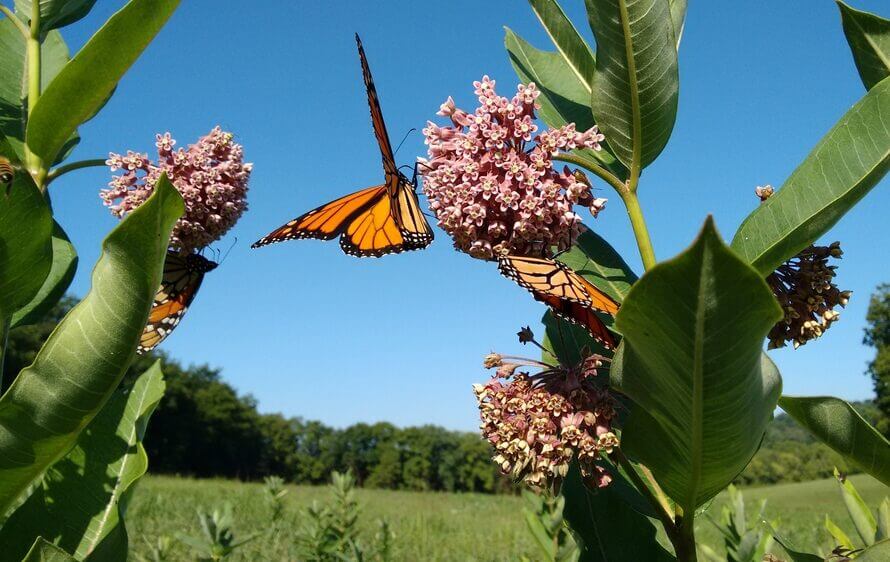
The Fish and Wildlife Administration has recently reopened public comments on listing the Monarch Butterfly, Danaus plexippus, as a threatened species under the Endangered Species Act. This reconsideration signals a concerning reality: Monarch populations have experienced a substantial decline in recent decades, and current trends suggest they are likely to become endangered in the near future if conservation efforts are not amplified.

Monarch Butterflies are divided into two primary migratory populations by the Rocky Mountains — the Eastern and Western cohorts. These populations exhibit unique migratory behaviors that are tightly synchronized with environmental cues and the availability of milkweed, the only plant on which Monarchs will lay their eggs. The Eastern population, which is more abundant and widely studied, embarks on a remarkable journey stretching over 3,000 miles. Each fall, they leave their breeding grounds in Southern Canada and travel to the oyamel fir forests of central Mexico, where they spend the winter in tightly clustered colonies high in the mountains. As spring returns, they begin the northward migration back to Canada, breeding and dying along the way, with the journey completed over several generations.
hough genetically similar, Monarchs display stark phenotypic differences depending on their migratory direction. Monarchs born in the spring and summer — the northward travelers — have shorter lifespans, living only two to five weeks. These individuals are tasked with flying, breeding, and laying eggs along the way, slowly advancing the population northward with each successive generation. This rapid generational turnover is heavily influenced by environmental factors, particularly temperature and the availability of young milkweed plants. For instance, Georgia’s milkweed emerges in May and June, while in Vermont it appears from June through September, creating a staggered pattern of availability that guides Monarch movement.
In contrast, the southbound population, which begins its migration in early September, is built for endurance. These Monarchs undergo specific physiological changes during the pupal stage — they suppress the production of juvenile hormone, which halts reproductive development, and instead allocate energy to survival. As a result, these individuals develop increased abdominal fat reserves, reduced metabolic rates, and enlarged wing muscles, enabling them to fly thousands of miles and live up to nine months.
Beyond these two main groups, there also exists a smaller, nonmigratory population in Florida. This group remains genetically diverse but has adapted to a stationary lifestyle, likely due to the region’s warm climate and the constant availability of nectar and milkweed sources. This population demonstrates the Monarch’s remarkable adaptability, though its small size and isolation make it vulnerable to localized environmental changes.
Understanding the Monarch’s migratory patterns and physiological plasticity is vital, but it is only part of the picture. Equally critical is recognizing the factors that have contributed to their dramatic population declines. Since the 1990s, Eastern Monarch populations have dropped by over 80%, and Western populations have seen even more devastating losses, with recent counts reporting fewer than 2,000 individuals along the California coast — down from millions in the 1980s.


The causes are multifaceted. While the role of genetically modified crops and herbicide use — particularly glyphosate — in destroying milkweed habitats across the Midwest is often cited, it’s not the sole factor. Large-scale habitat fragmentation, deforestation in Mexican overwintering sites, increasing frequency of extreme weather events, and climate change have all converged to threaten this delicate species. Even suburban development and road maintenance practices can decimate milkweed populations along migration corridors, removing critical breeding and feeding grounds.
The Monarch Butterfly’s story is one of both resilience and vulnerability. Their biannual migration is among the most astounding phenomena in the natural world, yet it is also extremely fragile. Protecting this species means not only preserving milkweed but also understanding and mitigating the broader environmental shifts that have disrupted their lifecycle. As public interest in Monarch conservation grows, it is essential that any future protections under the Endangered Species Act consider both the complexity of their biology and the variety of threats they face.
Without significant intervention, the Monarch Butterfly may become a symbol not of endurance, but of ecological loss. The time to act — through habitat restoration, responsible land management, and policy reform — is now, before the Monarch’s migration becomes a story we tell from memory, not experience.